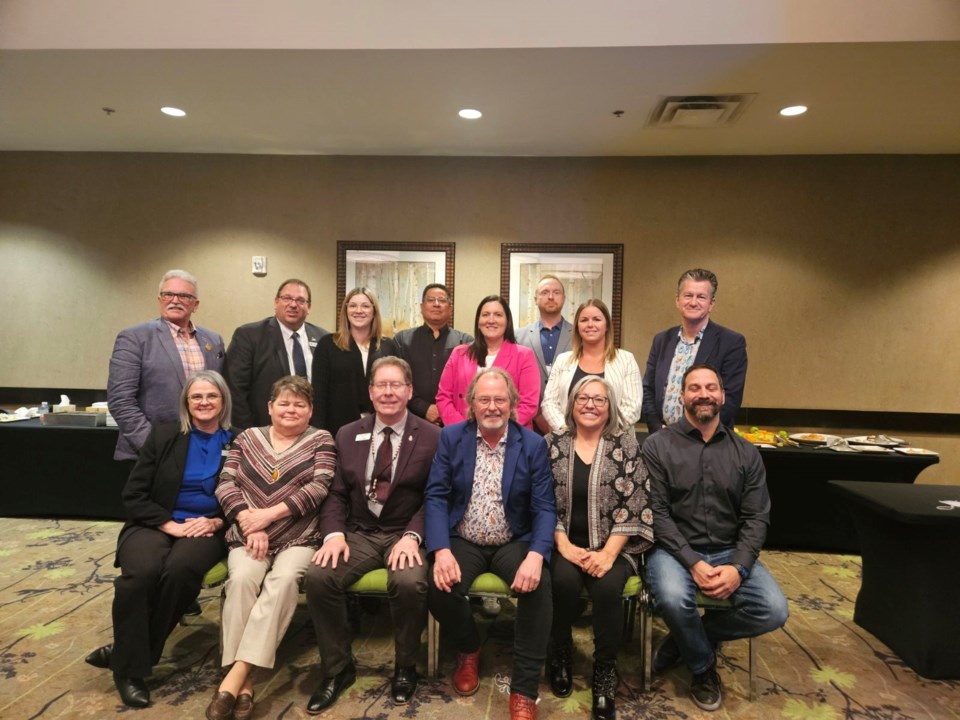SASKATOON — Eleven municipalities with historically high Crime Severity Indexes (CSI) from across Manitoba, Saskatchewan, Alberta, and British Colombia gathered in Saskatoon on Feb. 29, formally asking Statistics Canada to pause the CSI's annual release.
The request comes at the end of a 'CSI Conference' in Saskatoon, initiated by the City of North Battleford, aimed to help the municipalities come together and discuss what can be done about the 'dangerous' stigma now attached to their communities.
"We're here to issue a formal request to Statistics Canada to hold the release of the annual [CSI] rankings until future ... consultations are held with small communities and indigenous leadership," Lloydminster Mayor Gerald Aalbers, told media at a press conference Feb. 29
"When you see the numbers that are presented by Statistics Canada, it's very unnerving," he added, noting that some communities in attendance were unable to even attract junior hockey players.
The list of municipalities in attendance included:
- North Battleford, Sask.;
- Thompson, Man.;
- Cold Lake, Alta.;
- Wetaskiwin, Alta.;
- Fort St. John, B.C.;
- Portage La Prairie, Man.;
- Prince George, B.C.;
- Prince Albert, Sask.;
- Yorkton, Sask.;
- Lloydminster, Alta./Sask.; and
- Langley, B.C.
Other groups included:
- Federation of Sovereign Indigenous Nations, (FSIN);
- Battlefords Agency Tribal Chiefs, (Sweetgrass First Nation);
- F Division RCMP;
- K Division RCMP;
- Prince Albert Police Service;
- the University of Saskatchewan; and
- Statistics Canada
Concerns regarding the CSI included alleged economic damage including stagnant population numbers and struggles attracting new business and qualified job seekers, supposed inaccuracies for communities with fluctuating populations and those close to the 10,000 cut-off in comparison to larger centres.
“By driving away investment and recruitment and creating fear and division, this statistic perpetuates the very trends it reports on," reads a statement from the City of North Battleford
“This arbitrary number of reporting data at 10,000 people or more is not an indicator of a community’s overall safety.”
Lastly, municipalities say that the CSI is routinely misunderstood by the general public and media, and that the CSI contributes to racial bias against Indigneous people.
Statistics systemically biased against Indigenous people?
Citing the Truth and Reconciliation Commission’s Calls to Action related to the collection of data involving Indigenous victims of crime, Sweetgrass First Nation Chief Lori Whitecalf said the annual release of the Crime Severity Index results in its own victimization of First Nations peoples.
“The outcome of the CSI causes racism and hateful statements to be directed at First Nations people. This indexing undermines reconciliation, and it takes us back to when those eight First Nations leaders were hanged [at Fort Battleford in 1885]," she said in a statement from the city.
"The social issues in Western Canada are there because Western Canada was born to look after ‘the Indian problem’. We need to change that now.”
In comments to the media, Chief Whitecalf said, "when that [CSI] is released, and it's very high, or we're number one, a lot of times the First Nations in the community,[ or in the] surrounding area, are blamed," she said.
She says as chief of a Sweetgrass First Nation, approximately 30 kilometres from the Battlefords that other First Nations should not shoulder this blame.
"But we have to work on solutions collectively. Solutions on the social problems and the social issues ... our broken history with Canada needs to be fixed."
She says when the CSI is released racism increases.
But Chief Whitecalf also challenged the federal government relating to use of data from her community, which is protected, explaining there is a duty to consult First Nations to include their data in federal statistics - which she says has not been done.
But if Statistics Canada does not halt the pause, Mayor Aalbers said that more action would have to be taken among the group.
If the 10,000 cap was removed, 15 small Indigenous communities would be the top most dangerous places in Saskatchewan.
A response from Statistics Canada
In a response to a request for comment, Statistics Canada told SASKTODAY.ca that they understand the concerns that have been raised and that they continue to work in close collaboration and welcome the feedback provided by trusted partners.
"The Crime Severity Index (CSI) was developed in 2009, in collaboration with academics, federal, municipal, and federal police services, and several federal and provincial departments, to provide a way to report on changes in crime severity in Canada," said Statistics Canada.
"There have been no changes to the methodology or the manner in which we disseminate the index since then," they added.




